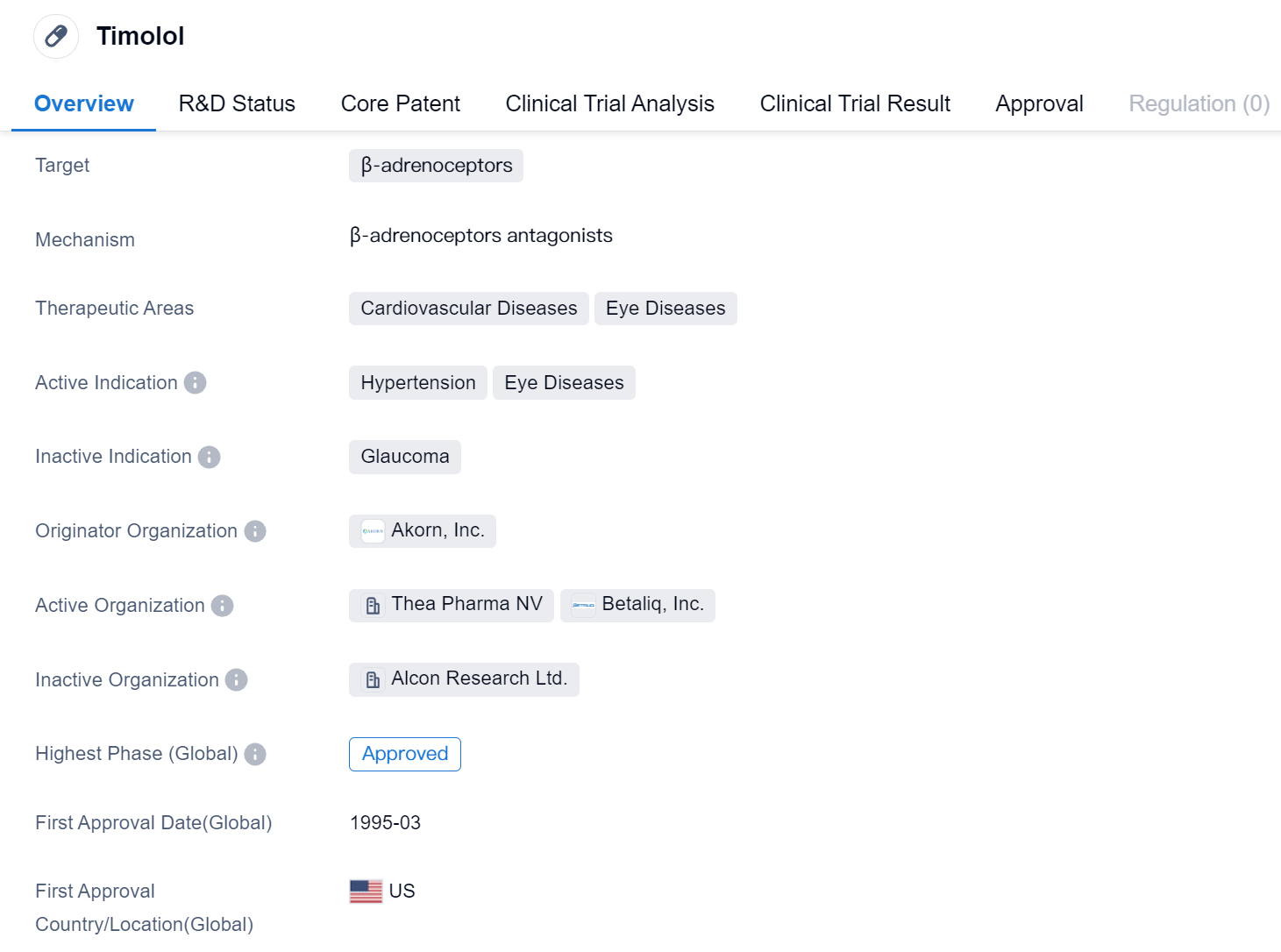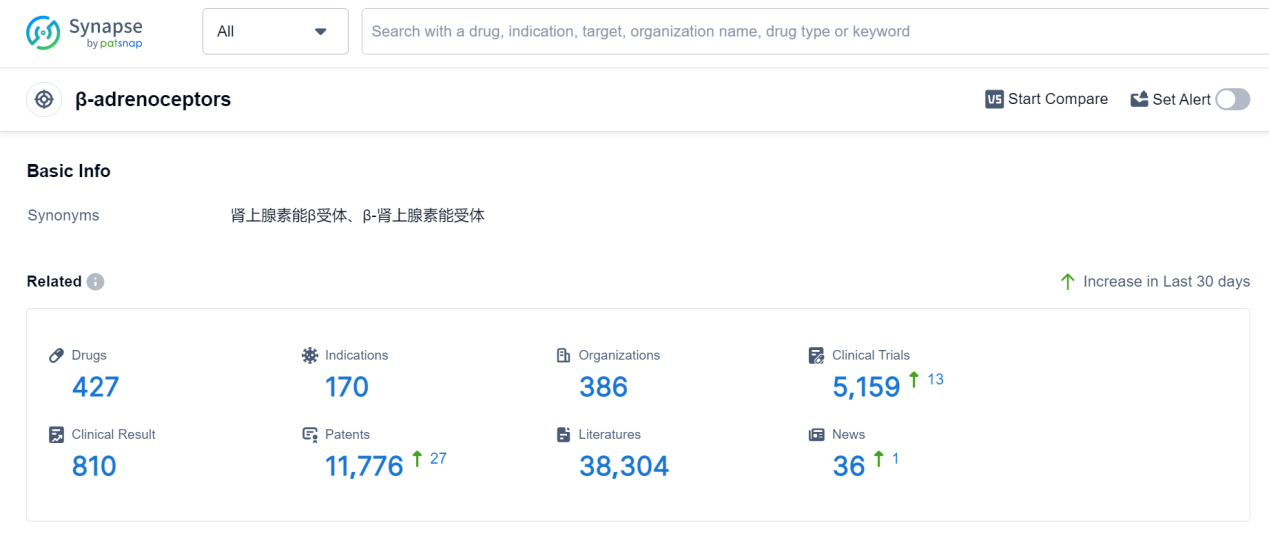Timolol: Detailed Review of its Transformative R&D Success
Timolol's R&D Progress
Timolol is a small molecule drug that targets β-adrenoceptors and is used in the treatment of cardiovascular diseases and eye diseases. It is indicated for the management of hypertension and eye diseases. The drug was first approved in the United States in March 1995 and has been approved for use globally.
Timolol is primarily used in the treatment of cardiovascular diseases, specifically hypertension. It works by blocking the β-adrenoceptors, which are responsible for regulating heart rate and blood pressure. By blocking these receptors, timolol helps to lower blood pressure and reduce the workload on the heart.
In addition to its cardiovascular indications, timolol is also used in the treatment of eye diseases. It is commonly prescribed for conditions such as glaucoma, where it helps to reduce intraocular pressure by decreasing the production of aqueous humor in the eye. By lowering intraocular pressure, timolol helps to prevent damage to the optic nerve and preserve vision.
The drug was developed by Akorn, Inc., a pharmaceutical company specializing in the development and manufacturing of generic and branded prescription pharmaceuticals. Akorn, Inc. is the originator organization of timolol.
👇Please click on the image below to directly access the latest data (R&D Status | Core Patent | Clinical Trial | Approval status in Global countries) of this drug.
Mechanism of Action for Timolol: β-adrenoceptors antagonists
β-adrenoceptors antagonists, also known as beta-blockers, are a class of drugs that block the activity of β-adrenoceptors in the body. β-adrenoceptors are receptors found on the surface of cells in various tissues, including the heart, lungs, blood vessels, and other organs. These receptors are responsible for binding to and responding to the neurotransmitter epinephrine (adrenaline) and norepinephrine (noradrenaline).
By blocking theβ-adrenoceptors, beta-blockers reduce the effects of these neurotransmitters on the body. This leads to a decrease in heart rate, blood pressure, and the force of heart contractions. Beta-blockers are commonly used to treat conditions such as hypertension (high blood pressure), angina (chest pain), arrhythmias (irregular heart rhythms), and heart failure.
From a biomedical perspective, beta-blockers work by competitively binding to the β-adrenoceptors, preventing the binding of epinephrine and norepinephrine. This results in a decrease in the sympathetic nervous system activity, which is responsible for the "fight or flight" response. By blocking the effects of these neurotransmitters, beta-blockers help to reduce the workload on the heart and lower blood pressure, ultimately improving cardiovascular function.
Drug Target R&D Trends for Timolol
β-adrenoceptors are a crucial component of the human body's sympathetic nervous system. These receptors are primarily found in the heart, lungs, and blood vessels. They play a vital role in regulating various physiological processes, including heart rate, blood pressure, and bronchial smooth muscle tone. Activation of β-adrenoceptors by endogenous catecholamines or synthetic agonists leads to increased heart rate, vasodilation, and bronchodilation. Conversely, blocking these receptors with β-blockers can reduce heart rate, blood pressure, and bronchial constriction. Understanding the role of β-adrenoceptors is essential in developing drugs that target these receptors to treat conditions such as hypertension, angina, and asthma.
According to Patsnap Synapse, as of 7 Sep 2023, there are a total of 427 β-adrenoceptors drugs worldwide, from 386 organizations, covering 170 indications, and conducting 5159 clinical trials.
👇Please click on the picture link below for free registration or log in directly if you have a freemium account, you can browse the latest research progress on drugs, indications, organizations, clinical trials, clinical results, and drug patents related to this target
Conclusion
In summary, timolol is a small molecule drug that targets β-adrenoceptors and is used in the treatment of cardiovascular diseases and eye diseases. It is indicated for the management of hypertension and eye diseases, and it was first approved in the United States in March 1995. Developed by Akorn, Inc., timolol has reached the highest phase of development and has been approved for use globally.






